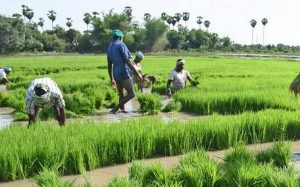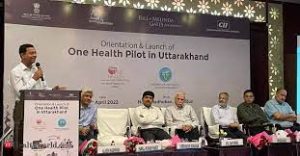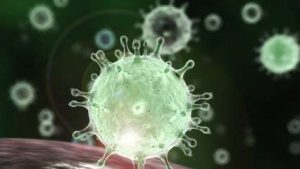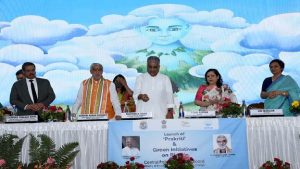Today Current Affairs: 9th April 2022 for UPSC IAS exams, State PSC exams, SSC CGL, State SSC, RRB, Railways, Banking Exam & IBPS, etc
Table of Contents
Training Programme On Natural Farming:

The Ministry for Agriculture and Farmers Welfare has inaugurated the Comprehensive Training Programme on Natural Farming, organised by the National Institute of Agricultural Extension Management (MANAGE).
- MANAGE was established in 1987 as the Indian response to challenges of agricultural extension in a rapidly growing and diverse agriculture sector.
- In practical terms, extension means giving farmers knowledge of agronomic techniques and skills to improve their productivity, food security and livelihoods.
- Natural Farming can be defined as a “chemical- free farming and livestock based ”. Soundly grounded in agro-ecology, it is a diversified farming system that integrates crops, trees and livestock, allowing the optimum use of functional biodiversity.
- It holds the promise of enhancing farmers’ income while delivering many other benefits, such as restoration of soil fertility and environmental health, and mitigating and/or reducing greenhouse gas emissions.
- This farming approach was introduced by Masanobu Fukuoka, a Japanese farmer and philosopher, in his 1975 book The One-Straw Revolution.
- It builds on natural or ecological processes that exist in or around farms. Internationally, Natural Farming is considered a form of regenerative agriculture—a prominent strategy to save the planet.
- It has the potential to manage land practices and sequester carbon from the atmosphere in soils and plants, where it is actually useful instead of being detrimental.
- In India, Natural farming is promoted as Bhartiya Prakritik Krishi Paddhati Programme (BPKP) under Paramparagat Krishi Vikas Yojana (PKVY).
- BPKP is aimed at promoting traditional indigenous practices which reduce externally purchased inputs.
- Natural Farming, as the name suggests, is the art, practice and, increasingly, the science of working with nature to achieve much more with less.
One Health Framework : Uttarakhand

The Ministry of Fisheries, Animal Husbandry and Dairying has launched a pilot project in the state of Uttarakhand to implement the One Health Framework by One Health Support Unit.
- The key objective of the Unit is to develop a national One Health roadmap based on the learnings of the pilot project implementation.
- Some of the key activities to be undertaken as part of the pilot project include institutionalizing the mechanism for data collection on disease outbreaks, prevalence, management, and development of targeted surveillance plan, integrating network of laboratories, developing and implementing communication strategy across sectors and integration of the data with the digital architecture of the National Digital Livestock Mission.
- One Health is an approach that recognizes that the health of people is closely connected to the health of animals and our shared environment.
- One Health’ vision derives its blueprint from the agreement between the tripartite-plus alliance comprising the Food and Agriculture Organization of the United Nations (FAO), the World Organisation for Animal Health (OIE).
- It’s purpose is to encourage collaborations in research and sharing of knowledge at multiple levels across various disciplines like human health, animal health, plants, soil, environmental and ecosystem health in ways that improve, protect and defend the health of all species.
World Health Day:

Every year 7th April marks the celebration of World Health Day.
- World Mental Health Day is observed on 10th October every year.
- Its idea was conceived at the First Health Assembly in 1948 and it came into effect in 1950.
- It is being celebrated today to mark the foundation of the World Health Organization (WHO) on 7th April 1948.
- Over the years, it has brought to light important health issues such as mental health, maternal and child care and climate change.
- Aim: To create awareness of a specific health theme to highlight a priority area of concern for the WHO.
- Theme for 2022: Our Planet, Our Health
Ganoderma Lucidum: Magical Mushroom

Worldwide attempts are being made to popularise Ganoderma lucidum (Magical Mushroom) for business and livelihood, by cultivating it on wood logs and sawdust.
- It is a medicinal mushroom in use for centuries to heal diseases like diabetes, cancer, inflammation, ulcer as well as bacterial and skin infections.
- In India, however, the potential of the fungus is still being explored.
- It is considered one of the most important medicinal mushrooms in the world since its chemical constituents exhibit numerous medicinal properties.
- They have earned it monikers such as “mushroom of immortality”, “celestial herb” and “auspicious herb”.
- It is globally also known as “red reishi mushroom”.
- The history of consumption of this mushroom can be traced back to 5,000 years ago in China.
- It also finds mention in the historical and medical records of countries like Japan, Korea, Malaysia and India.
- Unlike normal mushrooms, the peculiar character of this one is that it grows on wood or wood-based substrate only.
- It thrives well in warm and humid climates, and grows preferably in mixed forests of subtropical to temperate regions.
- It contains more than 400 chemical constituents, including triterpenes, polysaccharides, nucleotides, alkaloids, steroids, amino acids, fatty acids and phenols.
- These show medicinal properties such as immunomodulatory, anti-hepatitis, anti-tumour, antioxidant, antimicrobial, anti- Human Immunodeficiency Virus (HIV), anti- malarial, hypoglycaemic and anti-inflammatory properties.
- Apart from medicines, Ganoderma lucidum is also used as a base material for manufacturing products such as tea, coffee, energy supplements, health boosters, beverages, baked goods and anti-ageing cosmetics.
XE Variant Of The Coronavirus:

A 50-year-old woman in Mumbai, may have been infected with the newly-discovered ‘XE’ variant of the coronavirus.
- XE is a sub-variant of Omicron, which caused the third wave of Covid-19, which had not been found in India until now.
- So far, there is no indication that it is more dangerous than other variants.
- The Omicron variant, which is responsible for over 90% of the infections detected in 2022, has two prominent sub-variants, called BA.1 and BA.2.
- The XE variant is what is called a ‘recombinant’. This means it contains the mutations found in BA.1 as well as BA.2 varieties of Omicron.
- Recombinant variants are not uncommon.
- For example, variants that contain the characteristic mutations of Delta and Omicron have also been identified.
- This was first discovered in the United Kingdom in January 2022, and so far more than 600 samples of XE have been found in different countries.
- In fact, variants that contain the characteristic mutations of Delta and Omicron have also been identified.
Geomagnetic Storm:

The earth is likely to hit by a geomagnetic storm according to the Space Weather Prediction Center (SWPC) of the National Oceanic and Atmospheric Administration (NOAA).
- Geomagnetic storms are caused when events such as solar flares can send higher than normal levels of radiation towards Earth.
- This radiation interacts with the Earth’s magnetic field causing a geomagnetic storm.
- The disturbance that drives the magnetic storm may be a solar coronal mass ejection (CME) or (much less severely) a co-rotating interaction region (CIR), a high-speed stream of solar wind originating from a coronal hole.
- Effects from the geomagnetic storm can range from the appearance of auroras or the northern and southern lights to disruptions in communications systems due to high radiation. This would make it difficult to communicate with others on Earth.
- Geomagnetic storms are classified according to a scale that measures the effect that storms will have.
- At its safest level, a G1 storm affects power grids by causing weak fluctuations, minor impacts on satellite operations, and causes the northern and southern lights to occur.
- At its most extreme, G5, there would be voltage control problems with some grid system collapses or blackouts, radio waves wouldn’t be able to travel for one to two days, low-frequency radio would be out for hours, and the auroras would be able to be seen at lower latitudes than usual.
Prakriti : Green Initiatives

In another step toward eliminating single-use plastic, the Union Environment Ministry has launched “Prakriti”, a mascot to spread greater awareness about small changes that can be sustainably adopted in the lifestyle for a better environment.
During the event, following green initiatives were launched for plastic waste management:
- National Dashboard on Elimination of Single Use Plastic and Plastic Waste Management (MoEFCC):‘
- This aims to connect all stakeholders including Central Ministries/ Departments, State/UT Governments, etc. through one platform and track status and progress made for elimination of single use plastic & effective management of plastic waste.
- Extended Producer Responsibility (EPR) Portal for Plastic Packaging (CPCB):
- This portal will look after tasks that will help in overall operational functions like improving accountability, traceability, transparency and facilitating ease of reporting compliance to EPR Obligations by Producers, Importers and Brand-owners.
- Mobile App for Single Use Plastics Grievance Redressal (CPCB):
- This app will allow citizens to check sale/usage/manufacturing of single use plastic in their region and tackle the plastic menace.
- Monitoring module for single use plastic (CPCB):
- This will be for local bodies, State pollution control board/PCCs and CPCB, etc. to invent details of single use plastic production, its sale & usage, etc. in commercial establishments at district level, and on-ground enforcement of ban on single use plastics.
- Industrial production of Graphene from Waste Plastic (G B Pant NIHE & NRDC) will promote more industries to come forward to upcycle plastic waste.
O. Henry Award:

Amar Mitra’s short story titled Gaonburo, written way back in 1977, has fetched him the 1919-founded O. Henry Award, whose past winners include William Faulkner, Saul Bellow and Raymond Carver.
- The O. Henry Award is an annual American award given to short stories of exceptional merit.
- The award is named after the American short-story writer O. Henry.
- The award was first presented in 1919 and funded by the Society of Arts and Sciences.
- The PEN/O. Henry Prize Stories is an annual collection of the year’s twenty best stories published in U.S. and Canadian magazines.
MGNREGA : Revised Wage Rate

The Ministry of Rural Development has notified fresh wage rates under Mahatma Gandhi National Rural Employment Guarantee Act (MGNREGA) for financial year 2022-23.
- The wage rates are notified under the Mahatma Gandhi National Rural Employment Guarantee Act, 2005.
- The MGNREGA wage rates are fixed according to changes in the CPI-AL (Consumer Price Index-Agriculture Labour), which reflects the increase in the inflation in rural areas.
- 21 out of 34 states and Union Territories getting less than 5 % increase and 10 states getting more than 5 % hike.
- Of the 31 states and UTs, which saw a hike in wages, the maximum 7.14 % has been recorded in Goa.
- The lowest increase of 1.77 % is in Meghalaya.
- There is no change in the wage rates of three states – Manipur, Mizoram and Tripura.
MGNREGA:
- MGNREGA is one of the largest work guarantee programmes in the world.
- The primary objective of the scheme is to guarantee 100 days of employment in every financial year to adult members of any rural household willing to do public work-related unskilled manual work.




